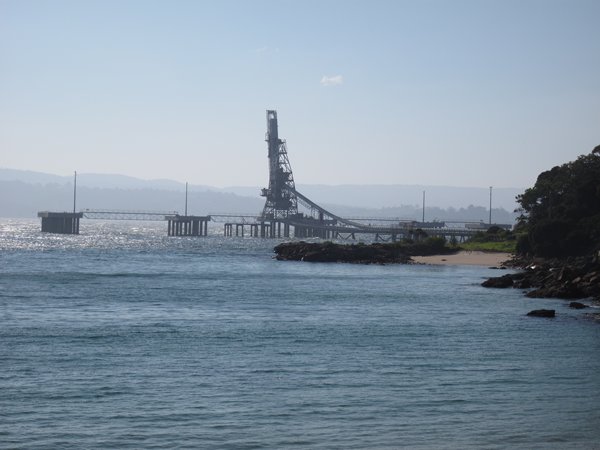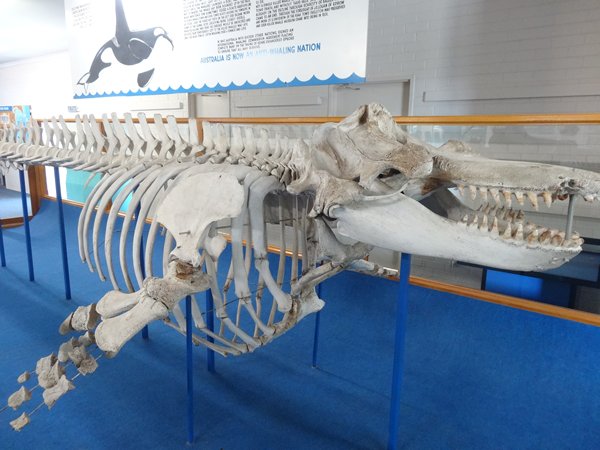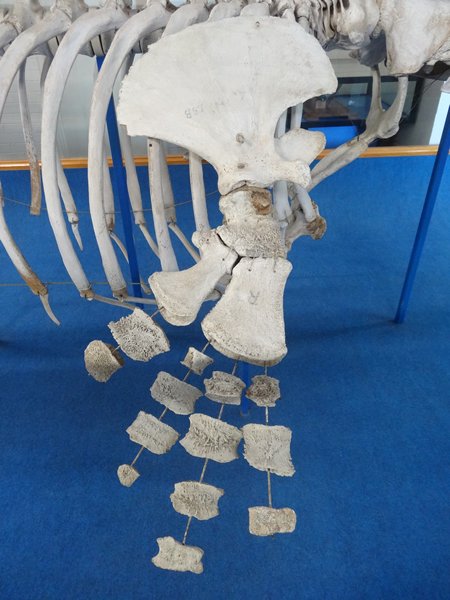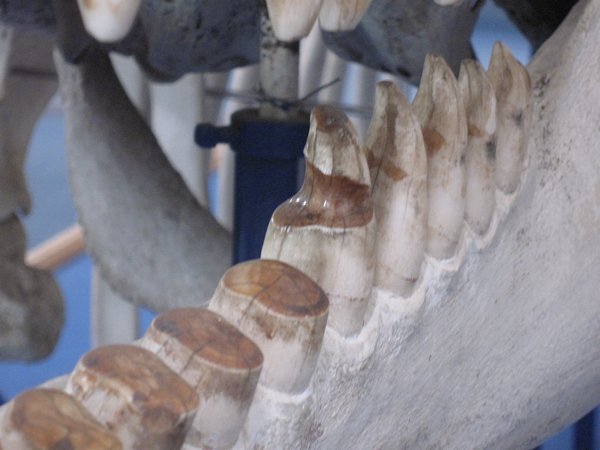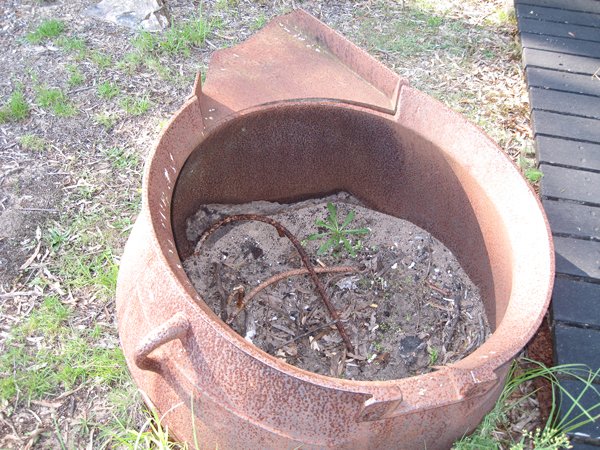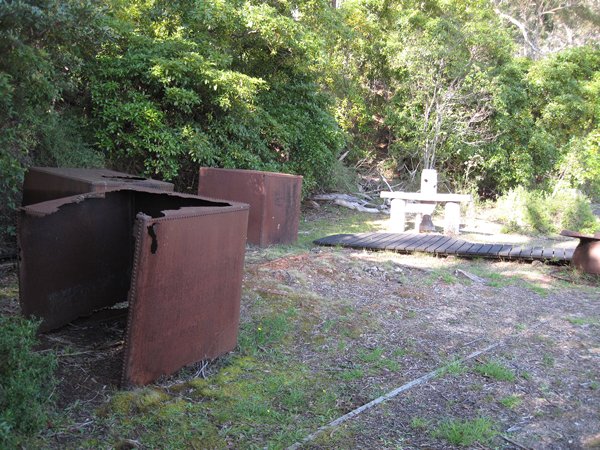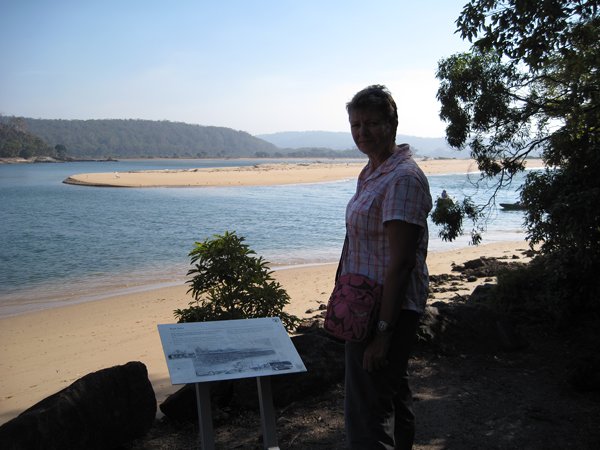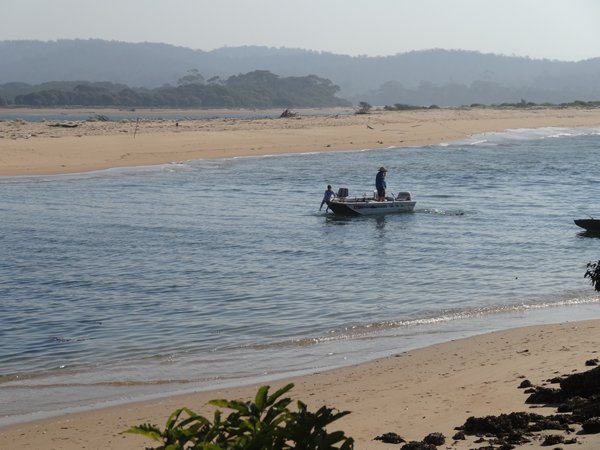Eden

Back at the seaside again. Temperatures got down to 5C at night in Jindabyne, so lovey to be back in the warmth. We are in Eden , which is on Twofold Bay, for a couple of days before going to Mallacoota for Easter. Twofold bay is the third deepest natural harbour in the southern hemisphere. There is a customs office – there is a big wood chip mill here as well as fishing boats. According to the smoke house man discussions were going on the build a marina. This area is where the Eastern Australian Currents meets water coming up from the Antarctic resulting in a lot of upwelling. The area is rich in fish and other marine life. The man at the smoke house was also telling us that the sardines were about to run. The wood chipping (the chipmill) loading quay which is the other side of Twofold Bay, directly opposite to Eden.
Visited the Eden Whaling Museum. This part of Australia used to hunt whales between 1828 and 1930. The whalemen here, though were assisted by a pod of killer whales. Apparently this working together between whales and man goes back further than European time. Aboriginals tell the story of killer whales helping humans, the payment being the whole tongue. This is the skeleton of ‘Old Tom’ a killer whale that used to come to the area. The killer whales used to herd baleen whales into the bay. Old Tom would swim to the whaling station at Kiah inlet (see below) and alert the whalers of their prey’s arrival by thrashing the water with their tails (Flop tailing). The whalers would launch their boats, harpoon the whale, and then leave it attached to a buoy and come back 24hrs later. After the whale was harpooned, some of the killers would expedite it’s death by rolling over its blowhole to prevent it from breathing. The whales would eat the tongue and the lips of the whale and then leave the rest for the whalers. It became known as the law of the tongue. This suited the whalers because all they wanted was the baleen and the blubber. This is the only known co-operation between killer whales and man. Anyway when Old Tom died no more killer whales came to the bay. Old Tom’s body was found floating in the bay, so they brought it ashore and preserved the skeleton and here is the skeleton.
You can see here that the teeth on one side have been worn down. Apparently if whalers were going too slow Old Tom would grab the rope and pull them along, or he would grab the line to slow the harpooned whale down . The rope has worn away the teeth.
We also visited the Davidson Whaling Station, this is another one of those Australian Heritage Sites. Nothing there but a rusty caldron and a few metal tanks. The Davidsons were one of three operators (with the Solomon and Barclay) vying for the whales sighted off shore. They employed a lot of aboriginal whalers and their success was attributed to local knowledge of the aboriginals. There were other whaling crews other than the Davidsons but they were always there. Ben Boyd was another whale operator famous in the area, the coastal national park either side of Eden is named after him.
A replica of the capstan that would be used to pull the whale up the beach. Paul as ever fascinated by mechanical bits and pieces.
You can see why the whaling station was based here though. This is Kiah Inlet, the sandbar in the back ground is called whale beach. The dead whales used to be towed in through Kiah Inlet and landed on the beach in front of the station – where I’m standing.
These guys were fishing for mussels in the entrance to Kiah inlet. There is another boat on the RHS – you can just make out the bow – and a couple of divers in the water.
|
